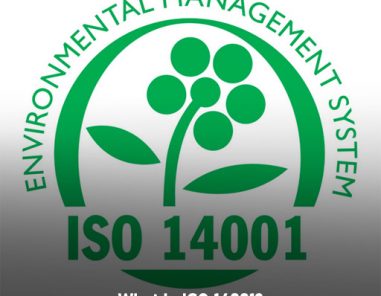
What is ISO 14001? Definition of Environmental management systems
The ISO 14001 standard is the leading standard for designing and implementing...
Read MoreThe ISO 14001 standard provides a set of regulations and elements that guide organisations in effectively implementing an Environmental Management System (EMS). The requirements outlined in the standard are applicable to industries of any size, type, level of maturity or location. The EMS conducts an environmental review to increase the organisation’s efficiency. The environmental review analyses both direct and indirect environmental aspects of the organisation. Risk of environmental accidents, land use, and local emissions such as noise, material use, waste, water emissions and air emissions are some examples of direct environmental aspects.
Similarly, some indirect environmental aspects include management and planning processes, insurance, capital investments, and product life-cycle. The ecological impact of these environmental aspects of reduced in an EMS through proper planning, implementation of corrective actions and constant evaluation. As a result of improved environmental performance, the organisation gains a competitive advantage and the trust of its stakeholders.
The other benefits associated with the implementation of an EMS include improved image credibility, improved cost control and the establishment of a continual improvement culture. In order to acquire the ISO 14001 certification, it is necessary to adhere to its standards. In this article, the standards of ISO 14001 are elaborated.

ISO 14001 standard is based on the Plan-Do-check-act cycle which uses these elements to implement the EMS. The EMS outlined in ISO 14001 itself does not dictate a level of environmental impacts. The EMS must be tailored to each organisation’s individual objectives. The EMS will help an organisation review its environmental goals, analyse its environmental impacts and compliance obligations. The EMS encourages organisations to improve its environmental process continuously.
The ISO 14001 standard is separated into ten sections which are also known as clauses. Clauses one to three describe the scope and provide valuable definitions. With the help of the ISO Council, you can learn about ISO 14001 standards.
Clause four deals with the general requirements of an EMS, including understanding the importance of organisational context, the expectations of interested parties and the documentation specificities. The advantage of defining the scope, stakeholder expectations and documentation specificities is that the EMS’s foundation is laid. Without proper definition, the EMS’s scope and functioning may be sub par.
Clause five deals with leadership and identifies top management’s responsibilities. This section identifies requirements such as the identification of organisational goals, the definition of environmental policies and the overall goals related to the EMS. The advantage of adhering to the requirements is that specific steps are created for the organisation to demonstrate their commitment to the EMS. Reading the What is ISO 14001 article will help you to get more information about the concept of ISO 14001.

Clause six deals with planning. This section emphasises the organisation’s need to identify risks and opportunities related to the EMS. A plan needs to be created to address every environmental aspect. An environmental aspect is the outcome of the interaction between an organisation’s process and its environment. In order to remain updated with the legal requirements, organisations must create plans to deal with the environmental aspects. In addition to dealing with environmental aspects and legal requirements, the plan also helps organisations set objectives related to the EMS.
Examples of some EMS-related objectives include waste reduction, energy consumption or experimenting with alternative forms of energy. Plans can only be created if the environmental objectives are clearly defined. Moreover, clearly defined objectives also serve as a motivating factor for all team members.
Clause seven deals with support. This is the largest section in the ISO 14001 standard. It lists the requirements of resources that would be needed to implement an EMS. EMS awareness, training programmes, and competence assessment are some of the resources.
A large part of this section is dedicated to addressing how organisations will control documented information for the EMS. The details of internal and external communication channels are also provided in this section.
Clause eight is a small section that deals with the operation. It sets the requirements on how organisations can create controls of their operations to safeguard their efficiency. This allows organisations to prepare for and respond appropriately to emergency environmental situations.
Clause nine deals with performance evaluation. This clause is the second largest section in the ISO 14001 standards. It guides organisations to monitor, measure, analyse and evaluate their EMS processes. In addition to EMS processes, the section also provides guidance for the evaluation of legal requirements compliance.
The aim is to help organisations audit their performance and to identify problems. Through the timely identification of problems, corrective solutions can be applied. Finally, the requirements also guide organisations to manage the EMS to ensure that it functions effectively and improves with time.

Clause ten is the last section of ISO 14001 and it deals with the requirements for continuous improvement. It teaches organisations how to address nonconformities within their EMS. By evaluating the continual improvement activities, organisations can identify problems before they become a hazard and help improve the processes with respect to their environmental impact. Corrective actions not only mitigate the risks associated with these processes but also improve their performance.
ISO certification gives your organisation competitive edge. By helping you increase operational efficiency and overall product consistency, your business credibility and authority will soar to new heights.

Copyright © 2025 The ISO Council | Privacy Policy